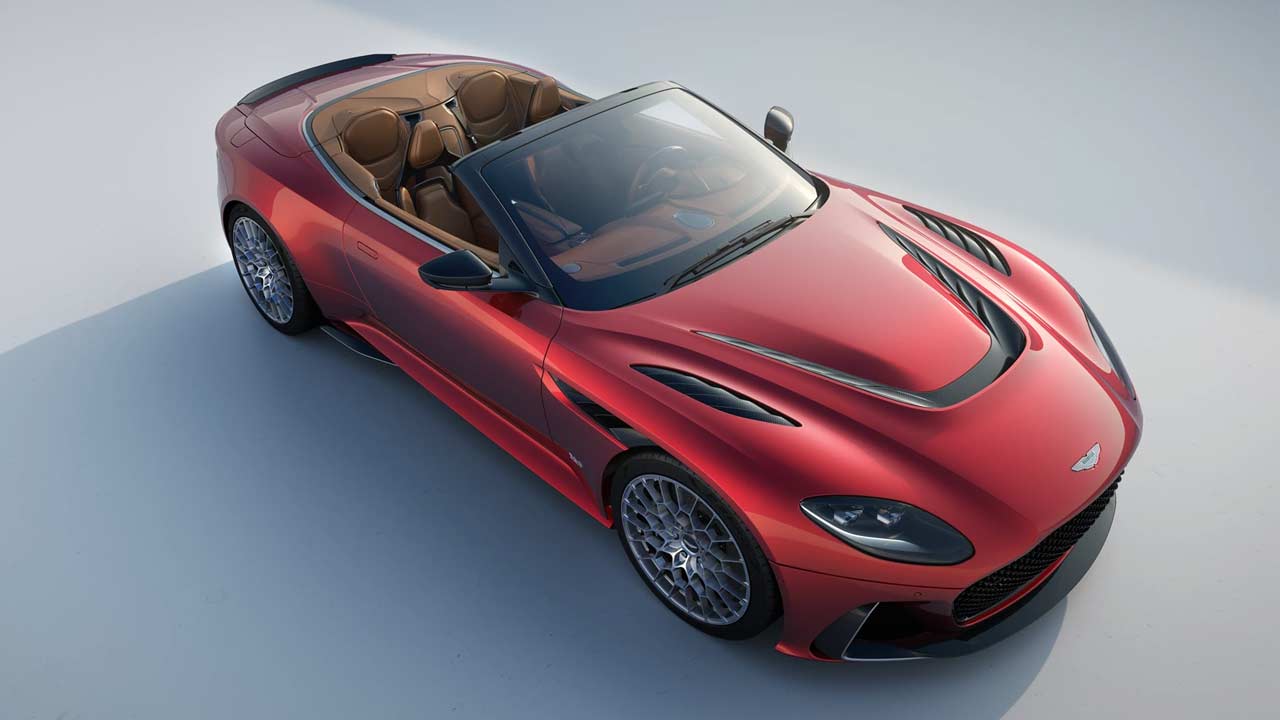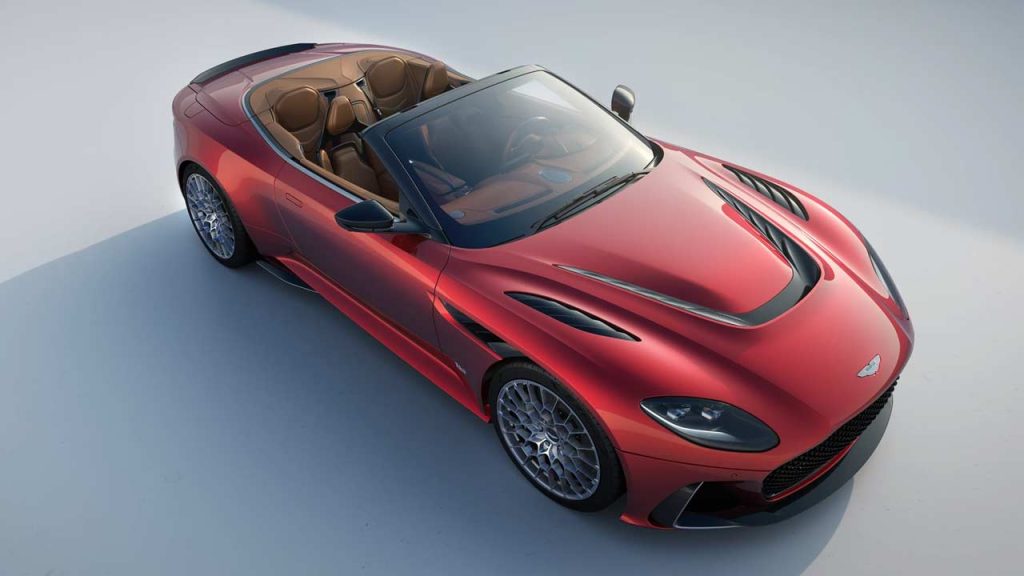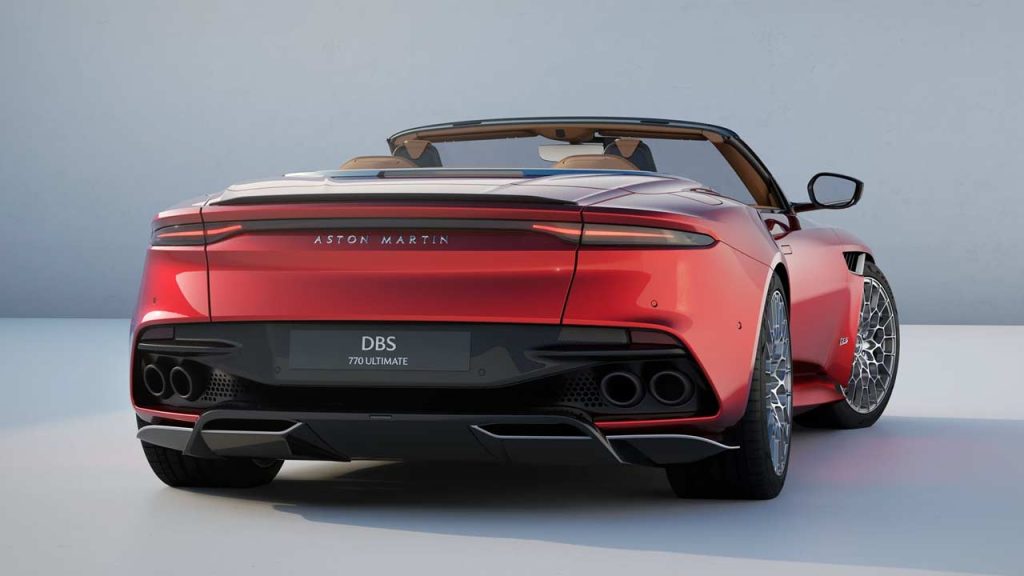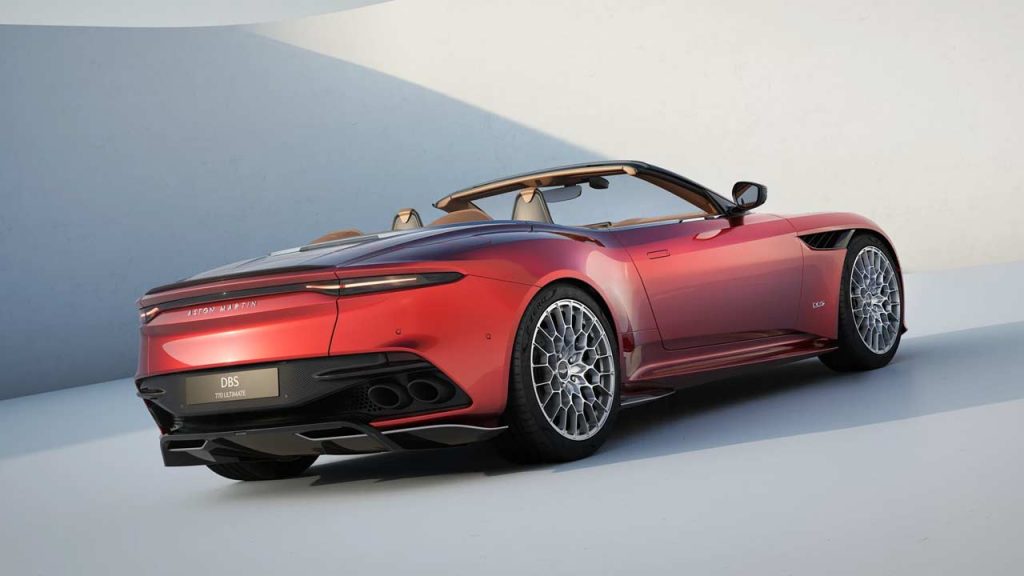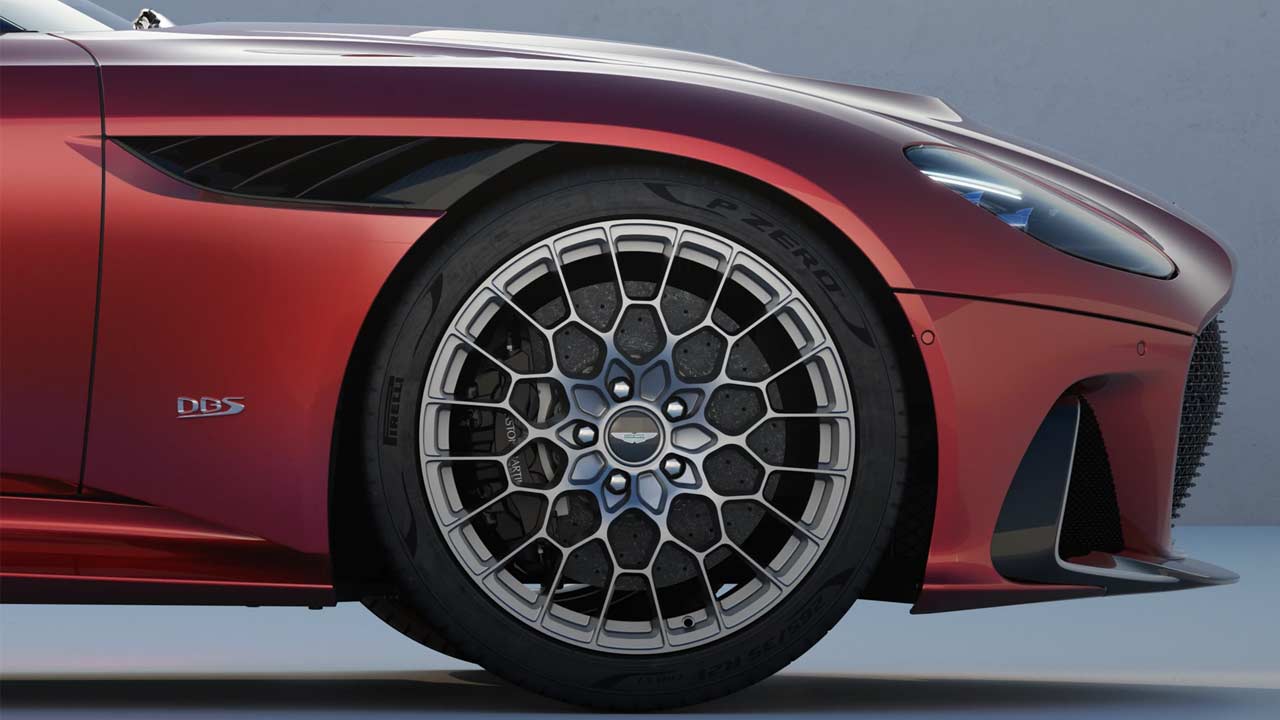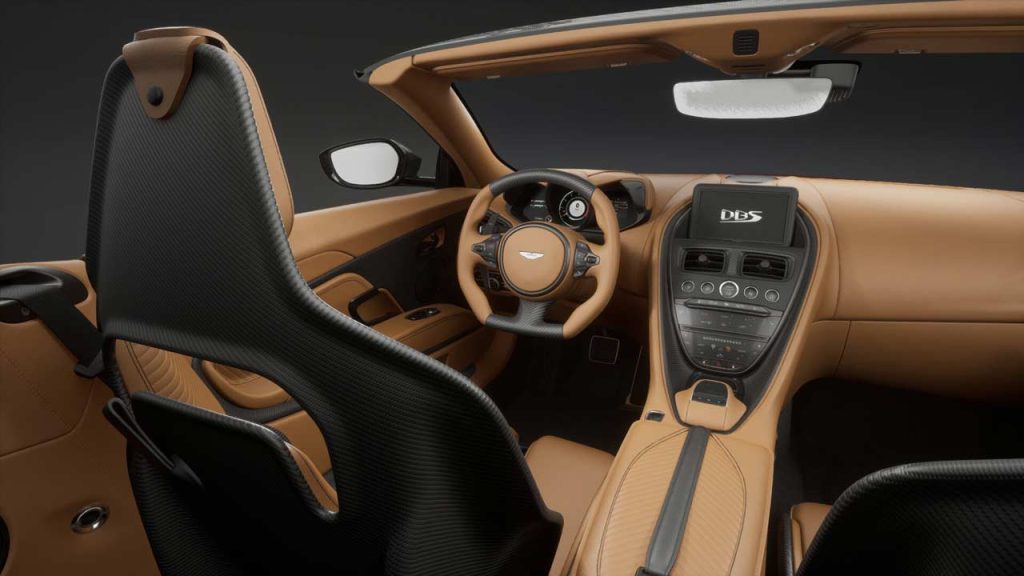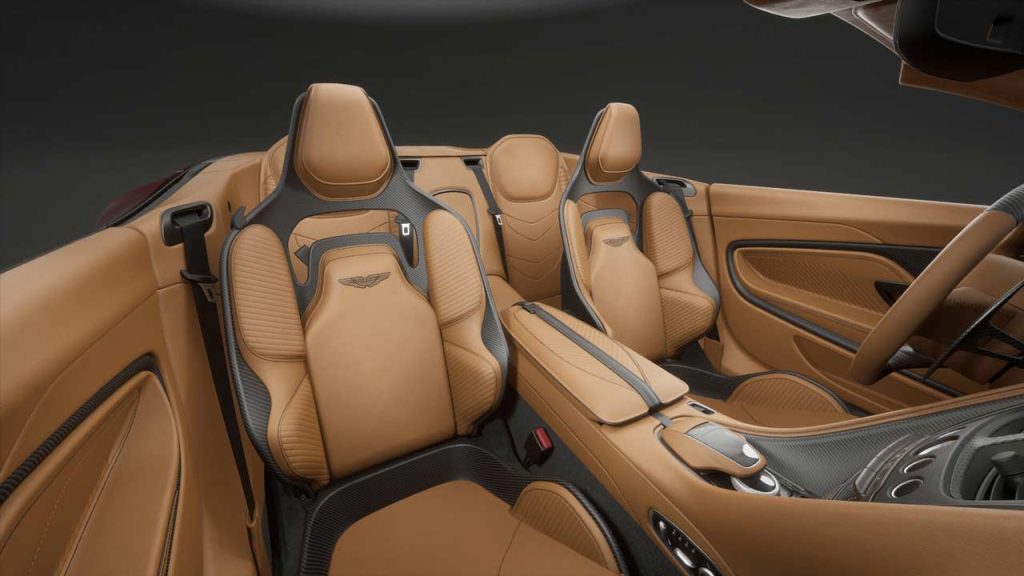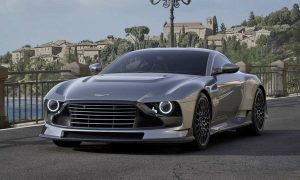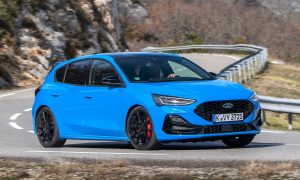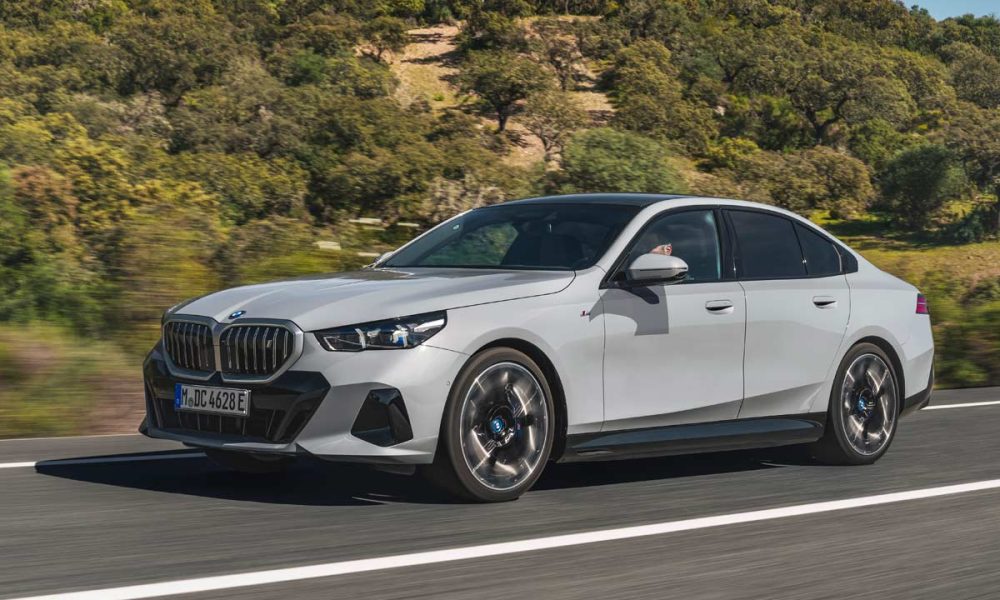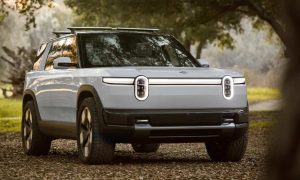You probably remember seeing the Aston Martin DBS 770 Ultimate earlier this year, which debuted as a goodbye edition—powered by an ultimate version of the V12 powerplant. Now though, it’s time for a drop-top version, the DBS 770 Ultimate Volante. While the Ultimate Coupe is limited to 300 units, the Ultimate Volante is gonna be even more exclusive with 199 units.
The DBS 770 Ultimate Volante retains all the ultimate stuff of the Ultimate Coupe, including that redesigned bonnet with a horseshoe-shaped vent and louvers; fender louvers; bumper outer intake inserts; rocker panel inserts, and rear diffuser inserts. You can also probably notice that boot lid spoiler, which looks sweet.
The Valkyrie-style 21-inch wheels are the same too, of course, as are the carbon ceramic rotors (410 mm at the front and 360 mm at the rear). The roof probably takes the same time to open and close as that of the regular DBS Volante, which are 14 and 16 seconds, respectively. The kerb weight (with lightweight options if any) is claimed to be 1,945 kg (4,288 lbs), which is understandably, 100 kg (220 lbs) more than that of the Ultimate Coupe.
It’s the same stuff on the inside as well, with carbon-shelled bucket seats grabbing all the attention. You get 12-way Sports Plus Seats as standard, while there’s an option to go for 6-way Carbon Fibre Performance Seats which is what I believe are shown in the pictures above. Dual-zone climate control and a Mercedes-sourced 8.0-inch infotainment system are standard too.
The 5.2-litre V12 biturbo motor pumps out 566 kW (770 metric hp) and 900 Nm (664 lb-ft) of torque. The engine is coupled with a ZF 8-speed automatic transmission and a mechanical Limited-Slip Differential (LSD) at the rear of the car. The official 0-100 km/h (62 mph) sprint time is claimed to be 3.6 seconds, which is 0.2 seconds slower than the Volante Coupe. The official top speed, however, is the same 340 km/h (211 mph).

Leave a Reply
Note: Comments that are unrelated to the post above get automatically filtered into the trash bin.
